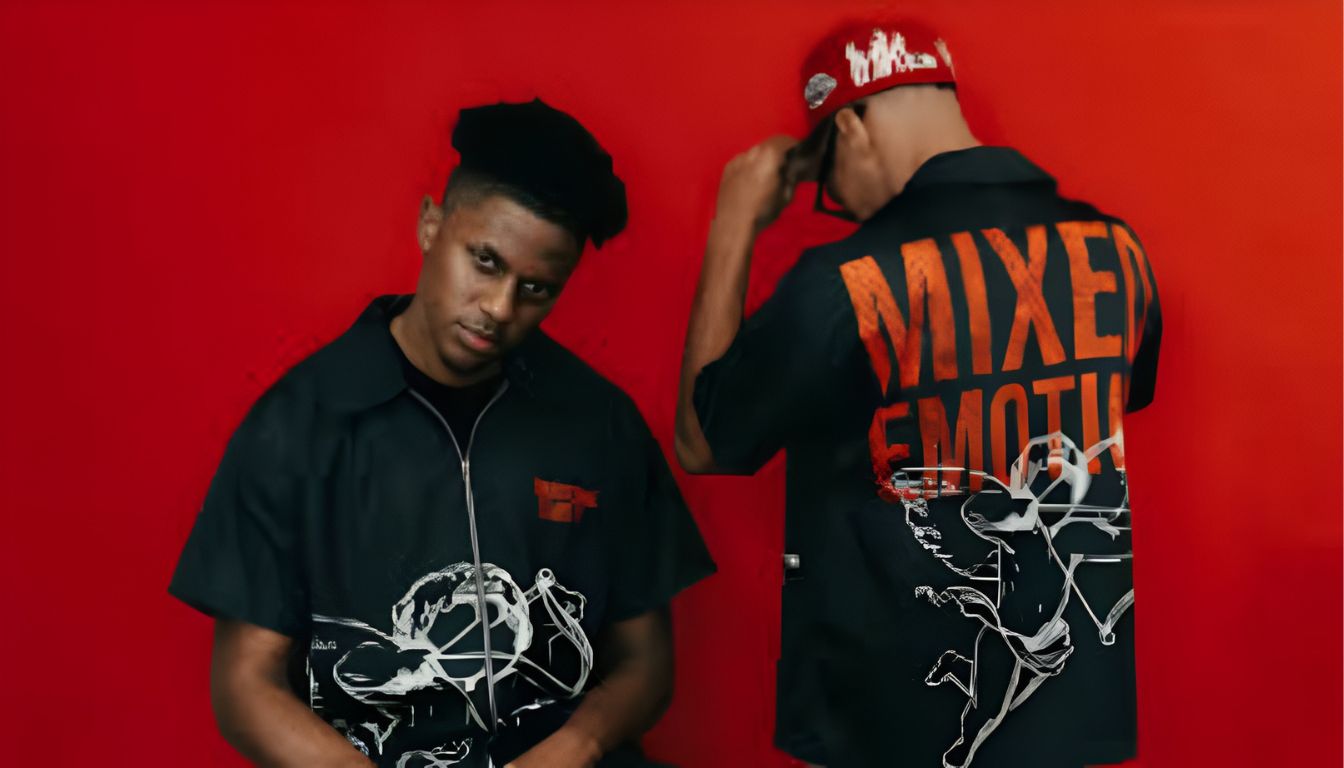Fashion extends far beyond the surface of fabric stitched with precision; it is an intimate dialogue between the unseen spirit and the visible world. Mixed emotions clothing captures this delicate interplay, translating contradictions of the human heart into garments that breathe meaning. Within its folds exist joy, sorrow, defiance, tenderness, and vulnerability, coexisting rather than competing. These pieces are not mere ornaments but vessels carrying stories mixedemotionn.com untold. In societies where emotional expression often faces barriers, such clothing becomes an unspoken rebellion, allowing sentiments to emerge boldly. It invites individuals to wear authenticity, courage, and the depth of humanity.
The Birth of Mixed Emotions in Fashion
The rise of emotional fashion was born as a response to lifeless, mass-produced garments that prioritized conformity over individuality. Historically, attire reflected class, occupation, or cultural belonging, but modern creative shifts ask deeper questions. Why should clothing serve only as protection or decoration when it can embody profound sentiment? Mixed emotions fashion grew from this challenge, merging melancholy with vibrancy, serenity with unrest. Designers began to craft pieces that did not shy away from emotional dissonance but highlighted it. Once experimental and niche, this approach has steadily flourished, transforming runways into intimate stages of human contradiction and resilience.
Colors as Emotional Narratives
Colors function as the silent vocabulary of the emotional wardrobe, communicating sentiments without a spoken word. In mixed emotions clothing, color pairings rarely settle into harmony; they thrive on deliberate dissonance. A burst of crimson over pale grey evokes passion awakening from numbness. Navy paired with golden yellow reveals endurance confronting despair. Black whispers quiet grief, while green murmurs renewal and hope. These chromatic juxtapositions mirror life’s unpredictability, where emotions seldom arrive in isolation. Instead, they collide and blend, just as colors do. The result is a visual narrative that embraces contradiction, reminding wearers that complexity is beautiful, necessary, and real.
Textures That Whisper and Shout
Textures, often overlooked, reveal emotional truths more profoundly than colors alone. The coarse weave of raw wool alongside the silky caress of satin embodies the tension between fragility and resilience. Velvet conveys longing and intimacy, while leather speaks of defiance and strength. Layering these materials allows designers to sculpt paradoxes into tangible form. A jacket might simultaneously comfort and unsettle, drawing fingers to explore its duality. This tactile dialogue mirrors the intricacies of emotion, where whispers of calm coexist with shouts of unrest. Mixed Emotion clothing elevates texture into a language of touch, carrying silent messages directly to the skin.
Patterns That Speak in Silence
Patterns are more than decorative flourishes; they act as cryptic manuscripts etched across fabric. Within mixed emotions fashion, they become visual metaphors for human contradiction. An abstract swirl might illustrate internal chaos, while broken stripes mimic fragmented journeys. Symmetrical grids may suggest longing for stability within disorder. Designers embed symbolism into motifs—florals disrupted by jagged lines portray fractured joy, while geometric disruptions narrate interrupted harmony. These patterns invite observers into quiet reflection, encouraging interpretations beyond surface beauty. Unlike conventional prints designed for ornamentation, these designs insist upon narrative. They convert clothing into poetry without words, whispering truths from the silence of fabric.
Cultural Threads in Emotional Fashion
Heritage and cultural memory play pivotal roles in shaping emotional attire. Designers frequently draw inspiration from ancestral traditions, weaving folkloric elements and symbols into contemporary garments. A kimono blended with digital patterns speaks of continuity and disruption, while a sari infused with avant-garde prints bridges generational divides. Such fusion emphasizes that emotions are never detached from culture—they are molded by history, rituals, and shared memory. Mixed emotions clothing thrives in this space, binding heritage with reinvention. The result is attire that not only dresses the body but also carries whispers of ancestry, transforming each piece into a woven archive of identity.
Personal Identity and the Emotional Wardrobe
Every wardrobe is a private archive of the psyche, reflecting moods, desires, and internal struggles. The selection of an outfit often mirrors one’s emotional landscape, whether consciously chosen or instinctively embraced. Mixed emotions clothing amplifies this phenomenon, encouraging individuals to embrace contradictions openly. Torn denim paired with an elegant blouse communicates resilience born from fragility, while a flamboyant coat layered over muted tones projects confidence rising from vulnerability. These ensembles resist conformity and honor authenticity. By wearing emotion, individuals reclaim control over narrative identity.
The Psychology Behind Emotional Fashion
Psychological research demonstrates that attire profoundly influences cognition, mood, and perception. Mixed emotions clothing taps into this connection, offering therapeutic value beyond its aesthetics. Wearing garments that mirror one’s internal turbulence can act as catharsis, easing the burden of unspoken emotions. Chaotic prints may soothe by externalizing disorder, while balanced contrasts restore calm. Fabrics engage tactile memory, colors alter emotional states, and patterns provoke subconscious reflections. Emotional fashion becomes a tool for resilience, enabling wearers to process feelings silently. It bridges psychology and artistry, offering not only adornment but also healing.
The Future of Mixed Emotions Clothing
The future of fashion lies at the intersection of sustainability, technology, and emotional resonance. As consumer culture shifts toward meaning rather than excess, emotionally infused garments gain enduring value. These pieces are cherished, not discarded, because they carry personal significance. Designers are also experimenting with digital fashion, creating virtual attire unrestricted by material limitations. Digital garments allow even bolder exploration of emotional storytelling, merging human experience with virtual artistry. Simultaneously, sustainable practices ensure fewer but more purposeful pieces find their way into wardrobes. This balance between ecological responsibility, innovation, and sentiment heralds a soulful, conscientious new chapter in fashion.
Wearing the Soul on the Sleeve
Mixed emotions clothing transcends style, emerging as an authentic expression of humanity’s inner landscape. Each clash of color, textured paradox, and cryptic pattern testifies to life’s contradictions—joy entwined with sorrow, harmony entangled with chaos. In a world that pressures individuals to appear polished and simplified, such fashion rebels, celebrating complexity instead. These garments allow people to move through society wearing their inner storms and rays of sunlight simultaneously.
